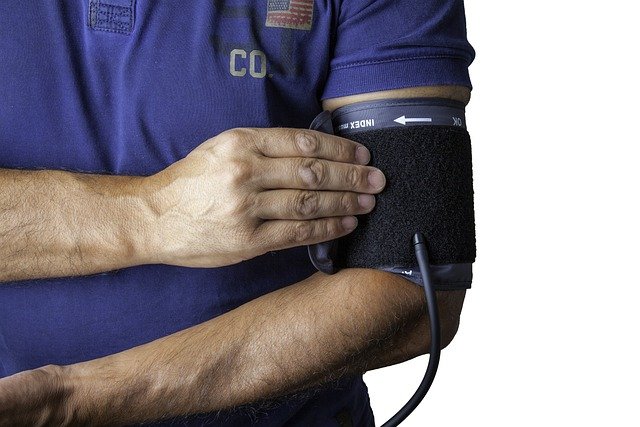Timing routine health screenings by age and risk profile
Routine health screenings are most effective when timed to a person’s age and individual risk profile. Understanding when to schedule preventive exams, which biomarkers to monitor, and how telehealth and outreach programs support adherence helps people and clinicians prioritize diagnostics, checkups, and lifestyle interventions for better long-term wellness.

Routine care timed to age and personal risk can improve early detection and prevention of disease while supporting long-term wellness. Establishing a schedule for screenings, checkups, and diagnostics requires blending general age-based guidelines with individualized risk assessment. This article outlines practical considerations for monitoring, biomarkers, scheduling, outreach, and telehealth so patients and providers can coordinate prevention efforts without unnecessary testing.
This article is for informational purposes only and should not be considered medical advice. Please consult a qualified healthcare professional for personalized guidance and treatment.
How does prevention shift with age?
Prevention emphasizes different priorities across the lifespan. In young adulthood, prevention often focuses on vaccinations, sexual health screening, and lifestyle counseling. Middle age typically adds cardiovascular risk monitoring, diabetes screening, and cancer screening initiation. Older adults face more frequent monitoring for chronic conditions, falls risk, cognitive screening, and medication review. Lifestyle factors—diet, exercise, sleep, and tobacco or alcohol use—remain central at every stage because they influence risk trajectories and inform which diagnostics and biomarkers warrant closer surveillance.
When should screenings and scheduling occur?
Age-based schedules provide a baseline: for example, blood pressure checks and some basic metabolic panels often begin in early adulthood and become more frequent with advancing age or risk. Scheduling should be flexible: people with family histories or known risk factors may need earlier or more frequent screenings. Compliance improves with clear, coordinated scheduling that aligns preventive visits with annual checkups or telehealth touchpoints. Outreach and education from clinics can reduce missed appointments and help patients understand why timing matters for early detection.
What checkups and diagnostics are commonly used?
Common checkups include blood pressure, lipid profiles, glucose or HbA1c testing, and basic metabolic panels. Diagnostics vary by age and risk: mammography or cervical screening for cancer, bone density scans for osteoporosis, and colonoscopy or stool-based colorectal tests as appropriate. Diagnostics should be selected based on guidelines and individualized risk assessment; unnecessary tests can increase cost and anxiety without improving outcomes. Combining routine checkups with targeted diagnostics allows clinicians to monitor biomarkers relevant to the patient’s risk profile.
How do biomarkers and monitoring guide care?
Biomarkers such as cholesterol, HbA1c, creatinine, or inflammatory markers can indicate evolving disease before symptoms appear. Regular monitoring helps detect trends—rising blood pressure, increasing glucose, or shifting lipid levels—that trigger interventions. For some conditions, longitudinal monitoring is more informative than single results, making scheduling and documented follow-up crucial. Monitoring also supports medication titration and lifestyle counseling, and when integrated into electronic records, it enables population-level outreach to improve preventive care compliance.
How is risk assessment implemented and managed?
Risk assessment combines family history, lifestyle, clinical measures, and sometimes genetic or biomarker testing to stratify patients. Tools such as cardiovascular risk calculators or fracture risk scores help determine screening frequency and preventive strategies. Management includes tailored lifestyle advice, pharmacologic prevention when evidence supports it, and clear documentation of follow-up intervals. Patient education and shared decision-making improve adherence to recommended screening intervals and lifestyle changes, while compliance monitoring through reminders or telehealth follow-ups can reduce missed opportunities.
How can telehealth, outreach, and education help?
Telehealth expands access to preventive counseling, medication reviews, and triage for diagnostics, reducing barriers related to travel or scheduling. Outreach programs—automated reminders, community education, and targeted calls—boost screening uptake and reinforce the importance of timely checkups. Educational interventions that explain the rationale behind specific screenings and biomarkers encourage informed choices and better compliance. Telehealth can also support remote monitoring of certain biomarkers or vitals, enabling clinicians to adjust scheduling and interventions based on real-time data.
Conclusion Timing routine health screenings effectively requires blending standard age-based recommendations with individualized risk assessment. Prioritizing the right diagnostics and biomarkers, coordinating scheduling, and using outreach and telehealth can improve prevention and monitoring while enhancing patient compliance. Regular review of risk factors and lifestyle ensures that screening intervals remain appropriate as health needs change.





